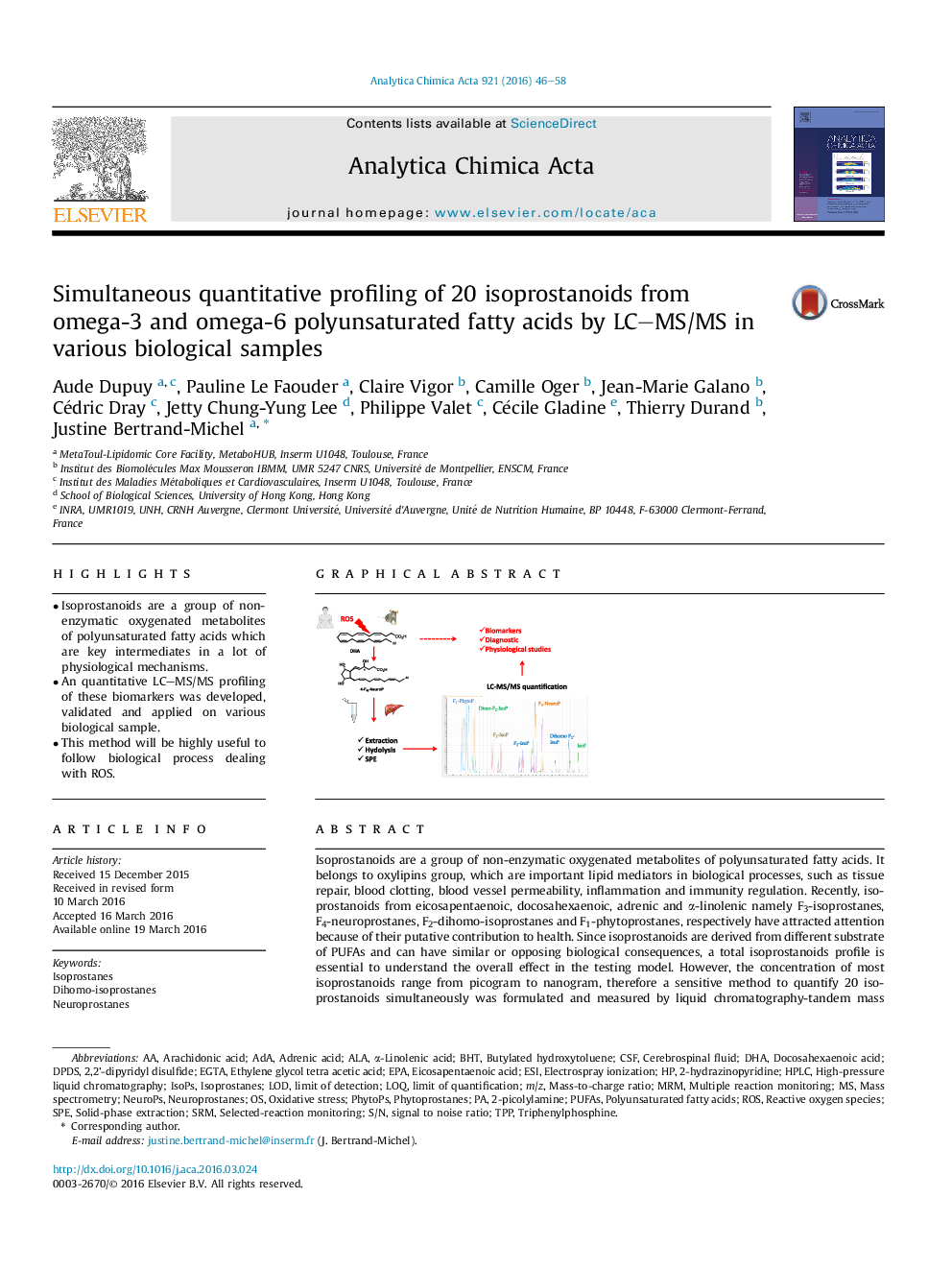| Article ID | Journal | Published Year | Pages | File Type |
|---|---|---|---|---|
| 1162901 | Analytica Chimica Acta | 2016 | 13 Pages |
•Isoprostanoids are a group of non-enzymatic oxygenated metabolites of polyunsaturated fatty acids which are key intermediates in a lot of physiological mechanisms.•An quantitative LC–MS/MS profiling of these biomarkers was developed, validated and applied on various biological sample.•This method will be highly useful to follow biological process dealing with ROS.
Isoprostanoids are a group of non-enzymatic oxygenated metabolites of polyunsaturated fatty acids. It belongs to oxylipins group, which are important lipid mediators in biological processes, such as tissue repair, blood clotting, blood vessel permeability, inflammation and immunity regulation. Recently, isoprostanoids from eicosapentaenoic, docosahexaenoic, adrenic and α-linolenic namely F3-isoprostanes, F4-neuroprostanes, F2-dihomo-isoprostanes and F1-phytoprostanes, respectively have attracted attention because of their putative contribution to health. Since isoprostanoids are derived from different substrate of PUFAs and can have similar or opposing biological consequences, a total isoprostanoids profile is essential to understand the overall effect in the testing model. However, the concentration of most isoprostanoids range from picogram to nanogram, therefore a sensitive method to quantify 20 isoprostanoids simultaneously was formulated and measured by liquid chromatography-tandem mass spectrometry (LC–MS/MS). The lipid portion from various biological samples was extracted prior to LC–MS/MS evaluation. For all the isoprostanoids LOD and LOQ, and the method was validated on plasma samples for matrix effect, yield of extraction and reproducibility were determined. The methodology was further tested for the isoprostanoids profiles in brain and liver of LDLR−/− mice with and without docosahexaenoic acid (DHA) supplementation. Our analysis showed similar levels of total F2-isoprostanes and F4-neuroprostanes in the liver and brain of non-supplemented LDLR−/− mice. The distribution of different F2-isoprostane isomers varied between tissues but not for F4-neuroprostanes which were predominated by the 4(RS)-4-F4t-neuroprostane isomer. DHA supplementation to LDLR−/− mice concomitantly increased total F4-neuroprostanes levels compared to F2-isoprostanes but this effect was more pronounced in the liver than brain.
Graphical abstractFigure optionsDownload full-size imageDownload as PowerPoint slide
